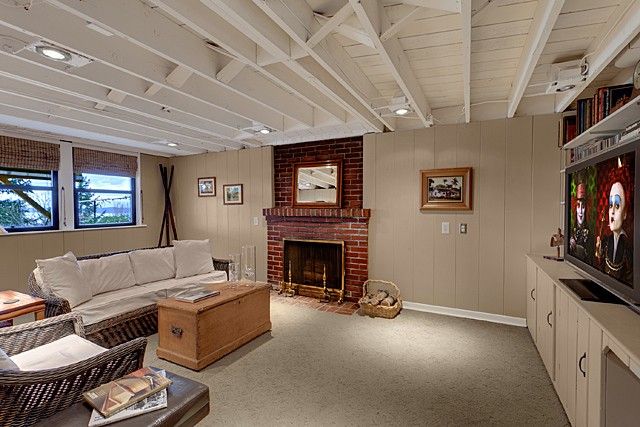Painting your basement ceiling can be a transformative and cost-effective way to improve the overall look of your basement. However, before you dive into this DIY project, it’s essential to answer the question, “How much to paint basement ceiling?” In this comprehensive guide, we will walk you through the steps and considerations to help you determine the cost, materials, and techniques needed to achieve a professionally painted basement ceiling.

How Much To Paint Basement Ceiling: Factors to Consider
Estimating the Cost
The cost of painting your basement ceiling can vary widely based on several factors, including:
- Ceiling Size: The larger the area, the more paint you will need, and the longer the project will take. Measure the square footage of your ceiling to estimate the amount of paint required.
- Ceiling Height: Higher ceilings may require specialized equipment or additional labor, which can increase the cost.
- Ceiling Condition: If your basement ceiling has imperfections, such as water damage or cracks, it may require additional preparation and repair work, adding to the overall cost.
- Paint Type: The type of paint you choose, whether it’s a standard latex paint or a specialized basement ceiling paint, will affect the cost. Specialized paints may be more expensive but offer better coverage and durability.
- Labor: If you decide to hire a professional painter, labor costs will be a significant part of your budget. DIY painting will save on labor but may require more time and effort.
- Equipment and Supplies: Consider the cost of painting tools, including brushes, rollers, painter’s tape, drop cloths, and a paint sprayer if you plan to use one.
Preparing the Surface
Proper preparation is essential for a successful basement ceiling paint job. The steps include:
- Cleaning: Clean the ceiling thoroughly to remove dust, dirt, and any potential contaminants. This will ensure that the paint adheres well.
- Repairing: Address any ceiling imperfections. Fill cracks, holes, and water damage, and sand the surface to create a smooth canvas for painting.
- Priming: Applying a primer can help the paint adhere better and provide a more even finish. Choose a primer specifically designed for basement ceilings.
Choosing the Right Paint
Selecting the right type of paint for your basement ceiling is crucial. Consider these factors:
- Ceiling Height: If your basement ceiling is low, a lighter color can make the space feel more open and airy. Darker colors can add coziness but may make the room feel smaller.
- Finish: The finish of the paint affects the overall appearance. Flat or matte finishes can help hide imperfections, while semi-gloss or gloss finishes reflect more light and are easier to clean.
- Moisture Resistance: If your basement is prone to moisture or humidity, choose a paint with moisture-resistant properties to prevent mold and mildew growth.
DIY vs. Hiring a Professional
Deciding whether to paint your basement ceiling yourself or hire a professional depends on your budget and skills. Here are some considerations:
- DIY: Painting your basement ceiling yourself can save on labor costs, but it may require more time and effort. Make sure you have the necessary tools, skills, and patience for the job.
- Professional: Hiring a professional painter can ensure a high-quality finish, especially if your ceiling is challenging to access. Obtain quotes from multiple contractors and check their references before making a decision.
Conclusion
Painting your basement ceiling is a fantastic way to improve the aesthetics of your basement. By carefully considering factors such as ceiling size, height, condition, and paint type, you can estimate the cost and plan your project accordingly. Whether you decide to take on the DIY challenge or hire a professional, a beautifully painted basement ceiling can transform your space and make it more inviting for various activities. Remember, preparation is key to a successful paint job, so invest the time and effort into getting your basement ceiling looking its best.